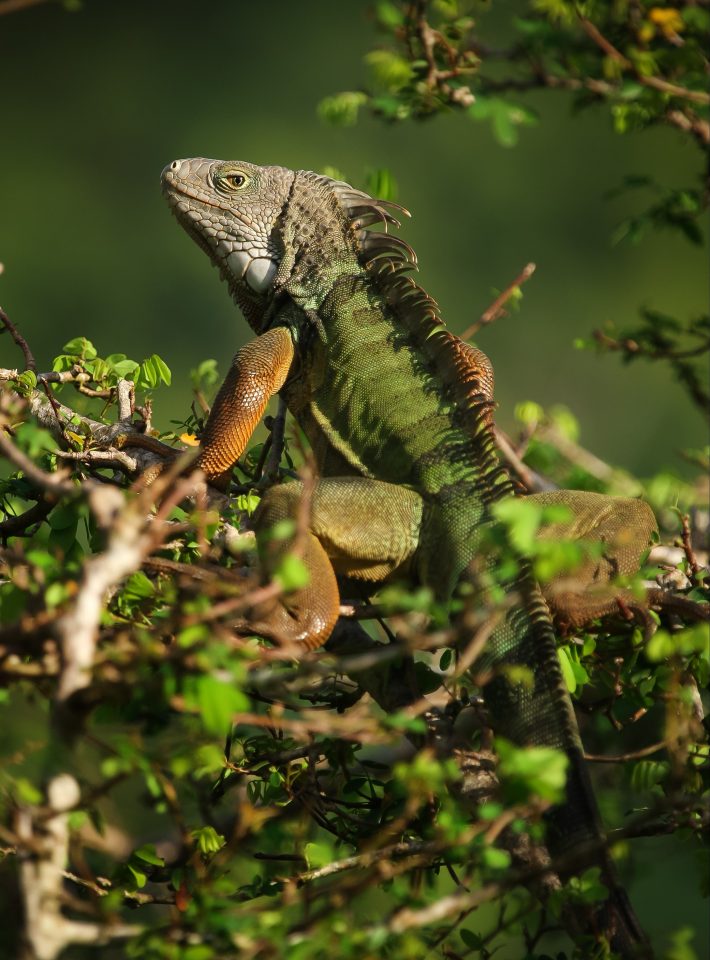Exotic pets that grow large and are cheap to purchase are more often released by owners
Large pet reptiles and amphibians that are sold small and cheaply are more likely to be released into the wild, according to a new study published today in the Journal of Applied Ecology.

Non-native species are increasingly recognised as a major threat to biodiversity and ecosystem functioning, and the exotic pet trade is now the dominant pathway by which reptile and amphibian species arrive in their non-native land.
To find out what species were popular pets in the United States, researchers from Rutgers University browsed through major online pet stores and import records from the government (US Fish and Wildlife Service) and obtained information on animal price, size and age at the time of sale.
From 1999 to 2016, 1,722 reptile and amphibian species were involved in the US exotic pet trade; lizards were the group with the most species for sale (739), followed by snakes with 490 species. Species that are imported in high numbers and offered at competitive prices, such as green iguanas and ball pythons, are among the most popular.
The ecologists then compared the species list with previous research and data from a citizen science project that records local sightings of non-native species, to see which species occur as free-living.
They found that species, which are commonly sold at low prices, are much more likely to be set free by their owners. These species, including the boa constrictor and reticulated python, are usually sold as babies but grow very large, or live a long time – over 30 years in the case of the African clawed frog and Russian tortoise.
“It is difficult to unravel why an owner might release their household companion. Impulsive buying decisions without proper research about care requirements could be a reason”, said Oliver Stringham, who led this study as part of his PhD at Rutgers University.
“They may underestimate the space and costs needed to keep such animals as they grow into adults.”
“Understandably, some owners may not wish to euthanise their pet for ethical or emotional attachment reasons”, he added.
Released exotic pets have the potential to spread and become invasive depending on the environment they are released into. They can harm native wildlife through predation, competition for food, and disease transmission.
One example is the invasive Burmese python in the Everglades National Park in Florida. This snake species originates from Southeast Asia and can grow to 5.5 metres in length, which may be why it was released by local pet owners in the 1990s. Since then, its population has increased dramatically and, as a top predator, has caused severe declines of many native mammals and birds.
Release can also be harmful for the exotic pets as many are not equipped to survive in the wild.
The study suggests that providing potential owners with information about the possible negative ecological impacts of releasing an exotic pet as well as a list of safe places to surrender them, including shelters, rehoming initiatives and ‘buy backs’, could avoid future releases.
Co-author Professor Julie Lockwood said: “When it comes to tackling nature invaders, it is best to take a precautionary approach. Stopping an established species from spreading is often not possible, and if at all, very expensive to eradicate. While it might not be possible to fully prevent the release of exotic pets, reducing the number can be an effective way to prevent new species from becoming established and potentially invasive.”
Read the full article (freely available for a limited time):
Stringham OC, Lockwood JL. Pet problems: Biological and economic factors that influence the release of alien reptiles and amphibians by pet owners. J Appl Ecol. 2018;00:1–9. DOI: 10.1111/1365-2664.13237
Media contact:
Sabrina Weiss, British Ecological Society press office, Tel: +44 207 685 2523, Email: press@britishecologicalsociety.org
Like what we stand for?
Support our mission and help develop the next generation of ecologists by donating to the British Ecological Society.